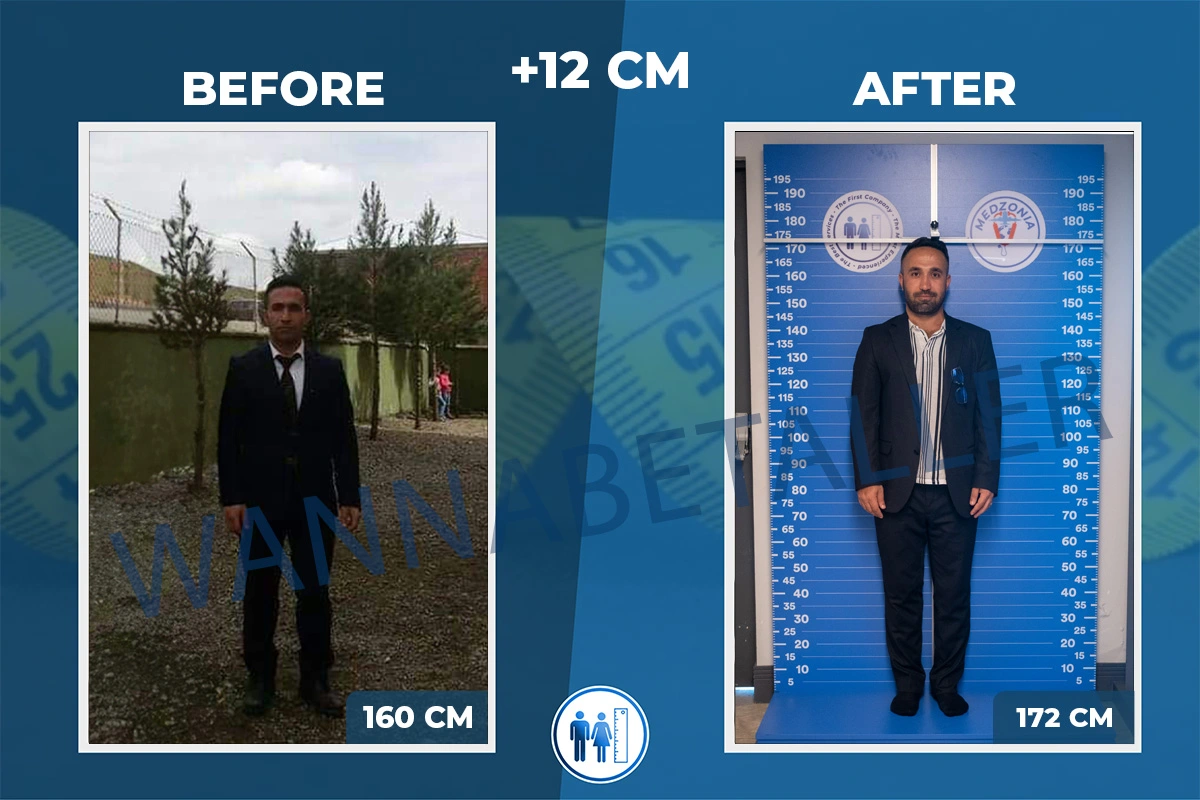 In recent years, limb lengthening surgery has gained increasing popularity worldwide, and it is chosen by many people who are dissatisfied with their short stature. The main reason for this is that adults can no longer increase their height through any diet or exercise routine. Limb lengthening surgery, which emerges as the method resorted to by individuals who do not grow taller biologically, is a surgical operation that aims to increase a person’s height by 5 to 15 centimeters. However, there is a lot of misinformation about this surgery, so you can find answers to questions like “How much taller can limb lengthening make you?” in the continuation of our article. It’s also important to note that this procedure is not just about adding height; it involves the careful and gradual stretching of the bones, followed by a recovery period for new bone tissue to form, which requires a significant commitment to post-operative care and physiotherapy to ensure successful outcomes.
In recent years, limb lengthening surgery has gained increasing popularity worldwide, and it is chosen by many people who are dissatisfied with their short stature. The main reason for this is that adults can no longer increase their height through any diet or exercise routine. Limb lengthening surgery, which emerges as the method resorted to by individuals who do not grow taller biologically, is a surgical operation that aims to increase a person’s height by 5 to 15 centimeters. However, there is a lot of misinformation about this surgery, so you can find answers to questions like “How much taller can limb lengthening make you?” in the continuation of our article. It’s also important to note that this procedure is not just about adding height; it involves the careful and gradual stretching of the bones, followed by a recovery period for new bone tissue to form, which requires a significant commitment to post-operative care and physiotherapy to ensure successful outcomes.
Before we get into our main topic, we would like to emphasize that growth plates in the body, which are responsible for height growth, close once adolescence is completed. This process typically spans the age range of approximately 18-21 years but can vary from person to person. Once individuals have completed their adolescence, their growth plates are closed, and biologically, it is not possible for their height to increase. At this point, there is no medication or vitamin supplement that can be used to increase height, and using any of the height-enhancing drugs available on the market can lead to health problems. Therefore, we recommend that you do not make any decisions without consulting a specialist doctor. After the closure of growth plates, the only way to increase height is through limb lengthening surgery.
Who can undergo limb lengthening surgery?
Limb lengthening surgery is a surgical operation that can be performed on individuals aged between 18 and 55 years, provided that their health conditions are suitable. The first thing people considering the surgery should do is consult a specialist doctor and undergo the necessary health examinations. In these examinations, especially for younger individuals, the growth plates are initially examined; the surgery is not suitable for individuals whose growth plates have not yet closed. After this check, the doctor performs several tests, including blood tests, X-ray imaging, bone health assessment, and evaluations of the general health condition. If all these results are positive, detailed discussions about the surgery are then conducted with the individual.
What is the maximum height gained by limb lengthening?
One of the most common misconceptions among those wanting to undergo the surgery is about the maximum amount of height increase. Unfortunately, individuals cannot decide how much they will grow with limb lengthening surgery. After medical evaluations by a doctor, the maximum height increase achievable for an individual can be determined. Generally, it is possible to gain approximately 6-8cm (about 2-3 inches) in height from the Femur and 5-7cm (about 2-2.75 inches) from the Tibia. However, it’s important to emphasize that these potential increases in height can vary based on the individual’s body structure and overall health condition.
Some patients may prefer to undergo two surgeries to achieve maximum extension. To explain with an example, our patient in their 40s, has achieved a total of 13cm extension through two surgeries. After the first surgery, there was an extension of 6.3cm, and after the second surgery, an extension of 6.7cm, resulting in a total of 13cm extension, reaching a height of 179cm. You can read his answers about the surgery from our interview.

